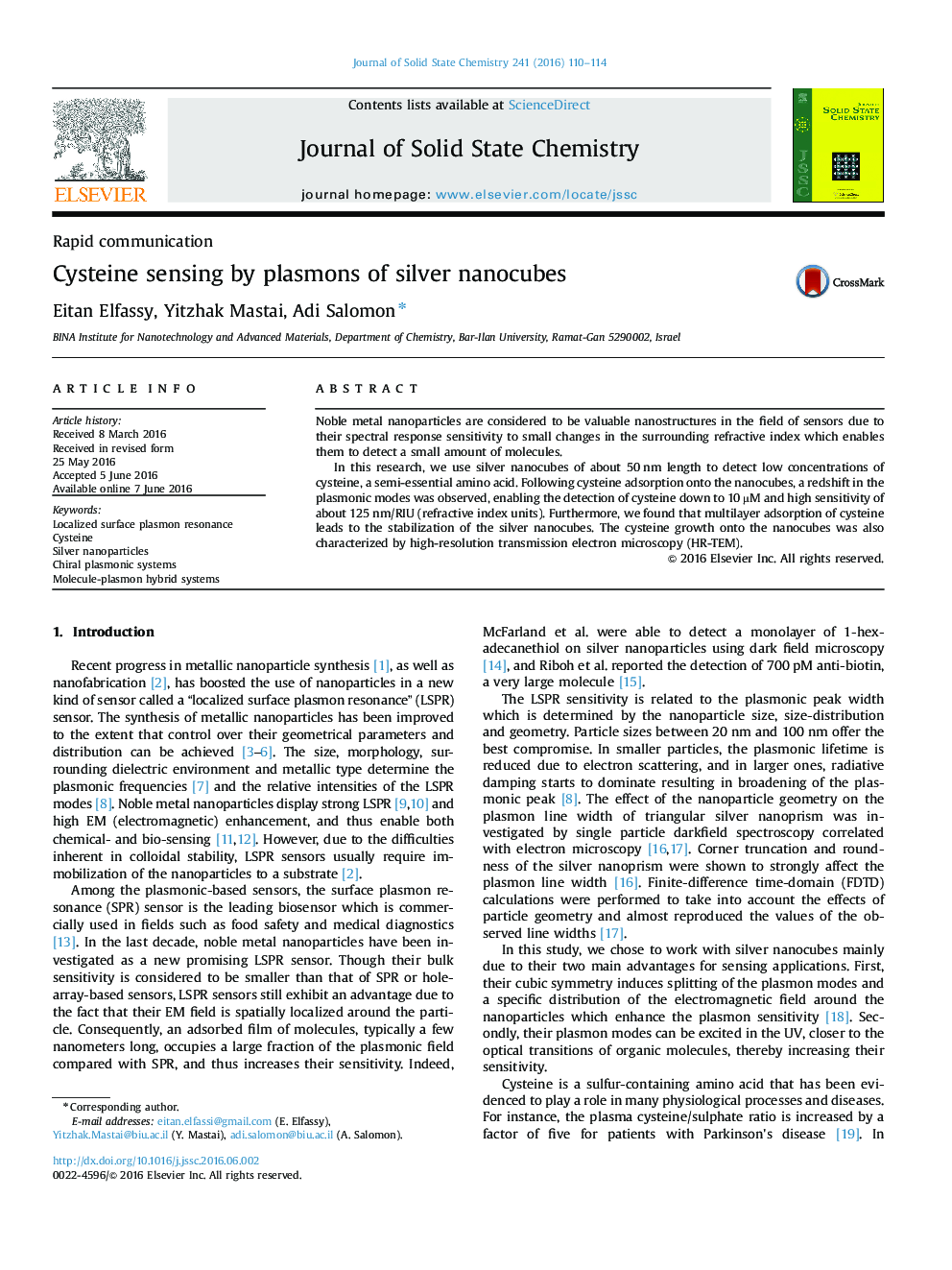| Article ID | Journal | Published Year | Pages | File Type |
|---|---|---|---|---|
| 1331307 | Journal of Solid State Chemistry | 2016 | 5 Pages |
•Silver nanocubes (50 nm length) are used to detect low concentrations of cysteine.•A redshift in the plasmonic modes was observed following cysteine adsorption onto the nanocubes.•The cysteine growth onto the nanocubes is also characterized by TEM.
Noble metal nanoparticles are considered to be valuable nanostructures in the field of sensors due to their spectral response sensitivity to small changes in the surrounding refractive index which enables them to detect a small amount of molecules.In this research, we use silver nanocubes of about 50 nm length to detect low concentrations of cysteine, a semi-essential amino acid. Following cysteine adsorption onto the nanocubes, a redshift in the plasmonic modes was observed, enabling the detection of cysteine down to 10 µM and high sensitivity of about 125 nm/RIU (refractive index units). Furthermore, we found that multilayer adsorption of cysteine leads to the stabilization of the silver nanocubes. The cysteine growth onto the nanocubes was also characterized by high-resolution transmission electron microscopy (HR-TEM).
Graphical abstractFigure optionsDownload full-size imageDownload as PowerPoint slide
